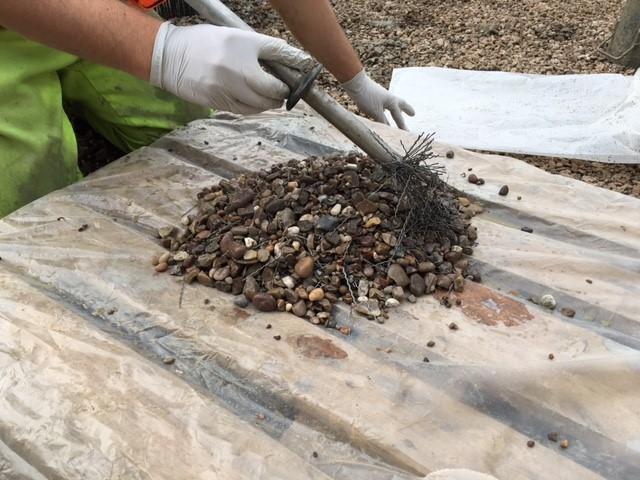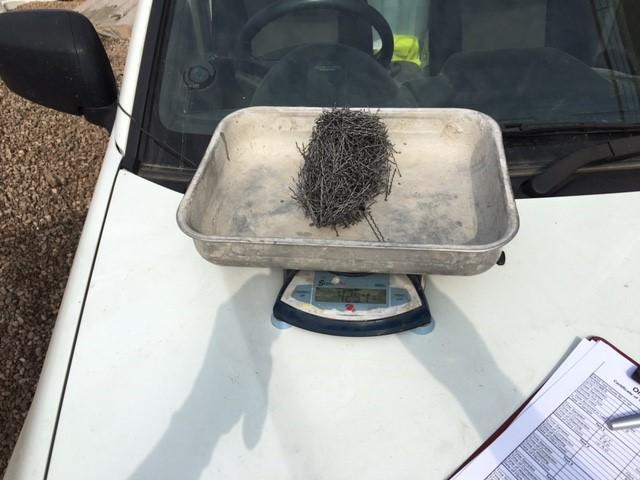A review of fibre test methods and reporting
A review of fibre test methods and reporting
by Donal Dowling, Monofloor Project Engineer
With the growing popularity of steel fibre reinforced concrete floors, the issue is in the spotlight of how to verify that there is an even distribution of fibres throughout the concrete mix.
An even distribution is important to ensure consistent strength across the slab and to reduce the uneven contraction and cracking.
A popular method of on-site testing for fibre distribution is called the “washout” test; and a testing standard exists for this, BS EN 14721:2005 +A1:2007.
However, the usefulness of this test has been called into question by some in the industry, with suggestions that the test findings are not representative of fibre distribution in the final slab, and hence the test is inappropriate.
“Testing the test”
Monofloor set out to “test the test”; and so collaborated with Omega Concrete Testing Services Ltd to monitor their fibre distribution testing at the construction site of a new Lidl distribution centre in Wednesbury, UK. The flooring contractor, Twintec, was also supportive of the testing. Monofloor Project Engineer Donal Dowling attended site on 18th August 2016.
The test method explained
The test requires that a measured, random test sample is selected and washed out using a sieve, to leave only the fibres and aggregates. The sample is then spread out on a polythene sheet, and the steel fibres are picked out using a magnet. The fibres are then weighed while still wet, and the results recorded. These show the kg/m3 rate of fibre density in the sample.
Usually three samples will be taken per load, and each will be recorded separately, and then an average will be calculated.
Variables such as mixing time will also be noted on the findings.
Document TR34 4th edition recommends that each sample contains greater than or equal to 80% of the stated minimum fibre density required by the flooring specification. The average value across the three samples must be greater than or equal to 85%.
At Wednesbury three sets of three tests were undertaken, in order to prove the principle – so nine separate tests in total.
The test findings
Having followed the procedure and recorded the results carefully, the tests gave the following results (figures are kgs/m3)
Test 1 sample 1 43
Test 1 sample 2 36
Test 1 sample 3 37.5
Average for test 1 38.83
Test 2 sample 1 36
Test 2 sample 2 28
Test 2 sample 3 31.5
Average for test 2 31.83
Test 3 sample 1 37.5
Test 3 sample 2 33
Test 3 sample 3 31
Average for test 3 33.83
Average across tests 34.83
The required fibre density on this project was 30 kgs/m3; and these results therefore show that this was achieved, for all samples and on average, and therefore the test method is appropriate.Conclusion
The work at Wednesbury shows that the test standard BS EN 14721:2005 +A1: for measuring fibre content works very well, when carried out methodically by a well-trained person. However, we acknowledge that this was just a single day’s testing. The sample was discharge method was via pump; and further testing which compared results with a direct truck discharge system would be helpful.
A key variable in the testing was the mixing time for the concrete, once the fibres had been added. We noted that this was not always consistent, and that longer mix times would give more consistent test results.
Also we observed that the test are rather time consuming: each one took between 1.5 and 2 hours to complete. Therefore there are practical limitations on how much testing can be achieved by one person in one day – even assuming they are well-trained and have no other duties on site.
A copy of the full test report can be downloaded here.
Latest Technical Advice and Articles
Disrputive face joints - a review
Formed construction joints are widely accepted to be the weakest ...







